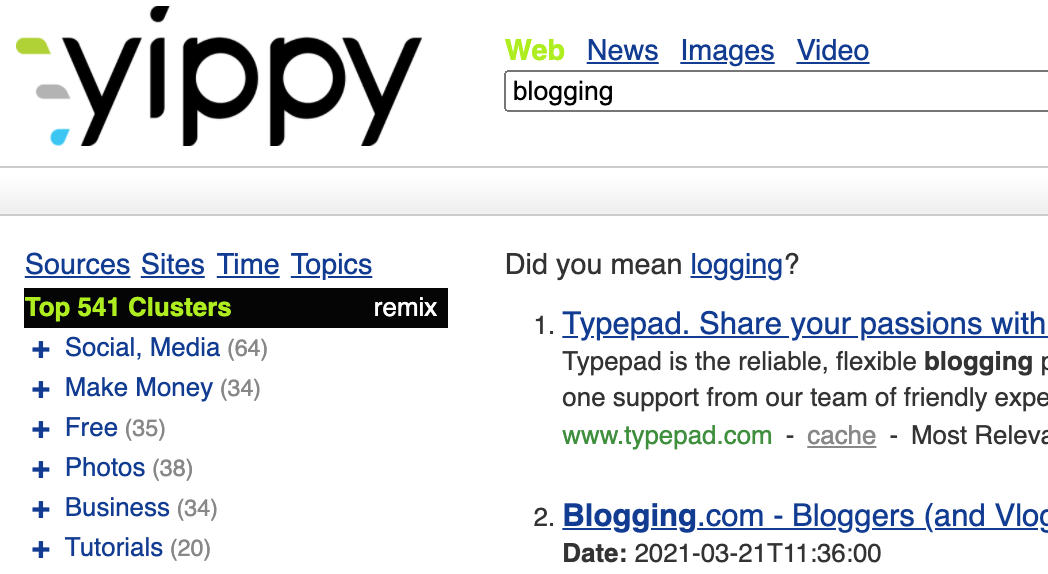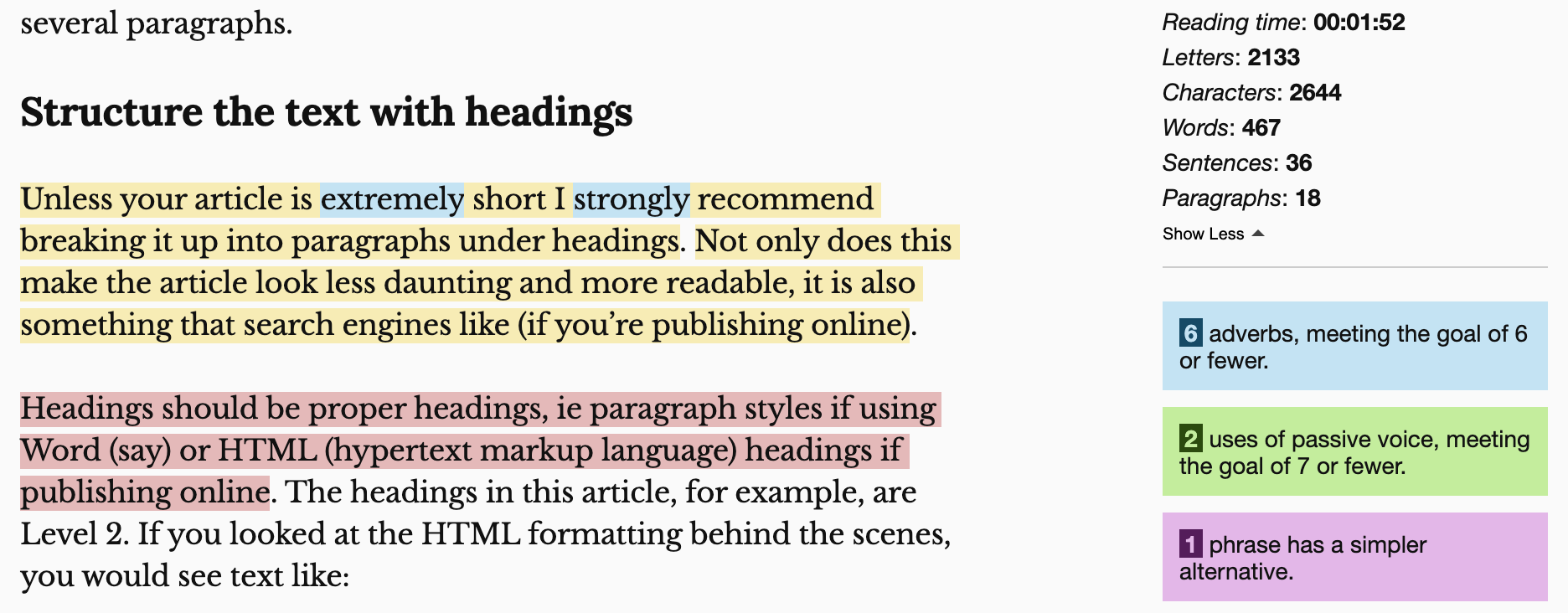Different people approach articles in different ways. I think it would be rather presumptuous of me to lay down the correct order of doing things. Therefore, this is a checklist of things to do. Not all of them will be relevant for every article, and the order in which they are undertaken partly comes down to personal preference. The order in which I’ve placed these aspects reflects my own practice, not some universal gold standard.
Get the right title
If the title has been given to you by an editor, that makes life a lot easier. I find it hard to make much progress until I’m satisfied with the title I’m going to address.
At this stage, if you’re so inclined, you might like to think about SEO: search engine optimisation. You would need to do some research about the latest SEO best practice. For example, should your article include keywords?
One thing to bear in mind if you’re writing an article for publication online is that there is no point in coming up with clever titles that mean something to you but will mean nothing out of context. For example, I could have called this article “Get it write!”. Nobody coming across that on the internet would have much of a clue as to its content. That’s why titles like “7 things you need to know about x”, or simply saying it how it is, as I’ve done here, are the best options.
Write an outline or list of points
If you have been asked to write about a topic, or have come up with a topic yourself, it’s a good idea to write down the points the article might address. I tend to do this even if I don’t know a huge amount about that particular area.
For example, I know about data protection, and I know about writing, but if an editor asked me to write an article called “Ten things every writer needs to know about data protection”, I’d have to do some research to make sure my knowledge was up-to-date, but also general enough to be useful for writers in different countries.
So what I would do is make a list of the kind of topics I think would probably be relevant, such as:
What sort of things are data protection laws in general intended to address?
What kind of pitfalls await the unwary?
Would describing a situation completely accurately apart from a person’s name protect you from being called to account under data protection (or libel) laws?
If you have been conducting research that involves people’s personal details, such as name, age, country of residency etc, what should you do in order to keep that data safe?
And so on.
Once I have a list of potential questions to address, I can start the next stage, which is research. Now, you might think that if you’re going to have to do research anyway, why bother with making a list of potential points? The reason is that making a list of points up front primes your brain to start thinking about the issues. You now have a list of things to look out for, which means that you are less likely to miss relevant things you come across, and more likely to be a critical reader of the research rather than a passive recipient of somebody else’s ideas.
Research
It’s important to bear in mind the following:
Research is more than using a search engine, because not everything is on the internet.
There are other search engines than Google, and it’s worth trying out different ones in order to obtain different results. Google tends to give you more of what it “thinks” you already prefer, so to some extent it’s pointless. There are some very specialised search engines, such as Boardreader, which looks in online forums and bulletin boards. Others, such as Google Scholar, look for published research. Some search engines enable you to see their sources, and also present results in a different way. See, for example, the screenshots below for Yippy and Carrot2. (Carrot2 also looks in published research, in its PubMed tab.)
Don’t overlook specialist research in your particular field, such as access to online journals via university library membership.
Also, check if your public library provides online access to reference and research sources to members. For instance, my local library consortium provides online access to the complete Oxford English Dictionary and to business research databases.
Results on the term “blogging” in Yippy.
Results on the term “blogging” in Carrot2.
Collate notes
At this stage I try to collate all the notes I’ve made under various headings (provided by my bullet point list) into one document. At this stage I might find that there is duplication of some points. Or I may have made a couple of related points but they are separated by several paragraphs.
Structure the text with headings
Unless your article is extremely short I strongly recommend breaking it up into paragraphs under headings. Not only does this make the article look less daunting and more readable, it is also something that search engines like (if you’re publishing online).
Headings should be proper headings, ie paragraph styles if using Word (say) or HTML (hypertext markup language) headings if publishing online. The headings in this article, for example, are Level 2. If you looked at the HTML formatting behind the scenes, you would see text like:
<H2>Structure the text with headings</H2>
Check the wordcount
An editor won’t thank you if you go several hundred words over the specified amount. When I write book reviews for Teach Secondary magazine, I’m given a limit of 150 words. For Schools Week it’s 650 words. I pride myself on always submitting the exact number of words. If the editor wants to suggest changes that inreases or decreases the number of words, that’s their prorogative. But at least I know I have done my bit to make their job easier.
Some useful word counting tools online are:
SEO Optima Web Word Count Tool This has three plus points:
You can enter the URL of your article if you have already published it, rather than having to copy and paste the whole text.
It gives you some feedback on readability.
It tells you if the article has good SEO.
Another one is Wordcounter. This provides you with additional information such as reading level, average reading time and how many times you’ve used each word.
Finally, I sometimes use the Hemingway Editor, which is free if you use the online version. It’s quite informative, and colour-coded, if a bit dictatorial:
The Hemingway app
Read it for readability
You would be surprised by how log or convoluted sentences can get if not brought under control. I was reading a magazine article recently, and I think the editor must have been on a tea break when the magazine went to press. Every paragraph was a sentence long, and each sentence had about 6 clauses separated by commas. It was unreadable. If you can break up a long sentence into smaller parts, then do so, but don’t go to the other extreme and form sentences of three words long. That can be supremely irritating — unless you’re targetting five year-olds I suppose.
Run a spellchecker (and grammar checker?)
Spellcheckers won’t pick up every mistake: see Spellchecker Blues. So they are not a substitute for manual proofreading. Grammar checkers can be extremely irritating. However, sometimes they pick up on things you might have missed.
Seek a second opinion
Ask someone else to read the article. They may find spelling mistakes, or incomprehensible sentences.
Add a call to action
If relevant. For example, at the bottom of this blog post I’ve inserted a call to action to sign up for my newsletter for nonfiction writers.
Finishing touches
If you’re publishing the article online, as a blog post, consider adding the following:
Tags. See Blogging: Categories And Tags
Categories. As above.
Images. See 12 Websites For Free Illustrations For Your Articles UPDATED!
One last thing…
Bear in mind that it’s only once you have sent off your article to an editor, printed off 100 copies of it, or published it on your website that you will spot the dreadful error (like “their” instead of “there”) that everyone who read through it managed to miss, including you. Best thing to do? Correct it, and resend or republish. Don’t just leave it in the hope that nobody will notice. They will.





